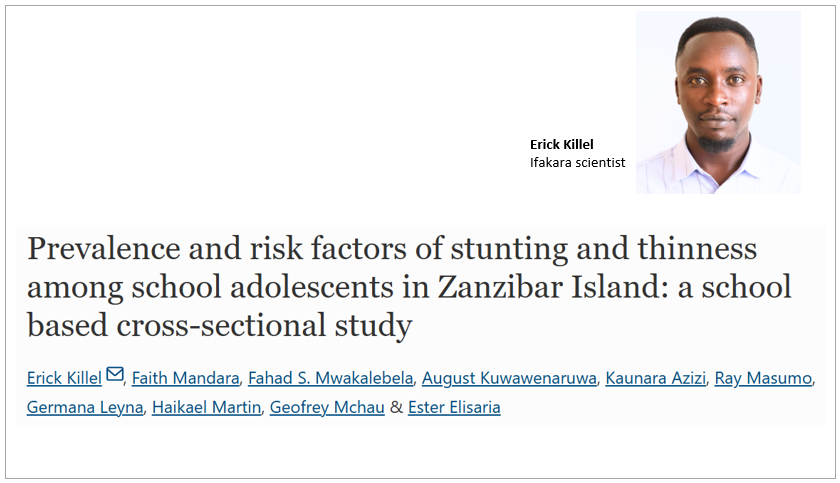
NUTRITION: Study finds Zanzibar adolescents at risk of stunting, thinness

A new study has uncovered concerning levels of stunting and thinness among adolescents in Zanzibar, signaling critical public health challenges in adolescent health and nutrition on the island that require immediate attention.
Conducted by Tanzanian researchers, the study analyzed data from 1,772 adolescents aged 10–19 years, obtained from the 2022 Zanzibar School Health and Nutrition Survey (ZSHNS). The findings, published on Bulletin of the National Research Centre journal, show that approximately one in nine adolescents (11.8%) were stunted, while 5.5% were thin, based on body mass index (BMI) measurements.
Stunting and thinness linked to age, gender, geography, and anemia
Stunting was more common among younger adolescents (10–14 years), males, those with anemia, and those living in rural areas. Thinness, on the other hand, was strongly associated with anemia, residence in Kusini Unguja, and—unexpectedly—middle-income households.
“These findings underscore the multifactorial nature of malnutrition in Zanzibar, influenced by a mix of biological, geographical, and socioeconomic factors,” the researchers stated. “Addressing it requires targeted, context-specific interventions focusing on risk factors such as age, sex, geographic location, anemia status, and household socioeconomic conditions."
Study led by young scientist from Ifakara Health Institute
The study was led by Erick Killel, a young research scientist enrolled in a joint master’s program run by the Ifakara Health Institute and the Nelson Mandela African Institution of Science and Technology (NM-AIST). His work was supervised by Dr. Ester Elisaria, a seasoned researcher at Ifakara, along with Haikael Martin and Geofrey Mchau from NM-AIST.
Anemia emerges as a key driver of malnutrition
Anemia—recognized as a key risk factor for impaired growth and development—was associated with both stunting and thinness in the study. According to scientists, this finding, which aligns with results from similar studies in Zambia, Uganda, and India, highlights the critical link between micronutrient deficiencies and poor growth outcomes.
“Globally, the Lancet Global Health report underscores the burden of anemia among adolescents as a key driver of both stunting and thinness, especially in regions with poor dietary diversity and limited access to fortified foods,” the researchers added. “Interventions that address anemia could thus have dual benefits—reducing both stunting and thinness.”
Undernutrition persists in middle-income families
In a surprising twist, the study found that adolescents from middle-income households were more likely to be stunted compared to those from lower-income households—challenging the common assumption that undernutrition is primarily linked to poverty.
This counterintuitive finding was consistent with studies from Malawi, Nigeria, Kenya, and Ethiopia, where researchers suggest factors such as increased access to highly processed, low-nutrient foods among wealthier families may be the cause.
On the other hand, when it comes to thinness, scientists believe that diet trends and social pressures may be contributing factors. "Adolescents from wealthier families might be more influenced by trends in dieting and body image, often promoting thinness as a symbol of status and self-control," they noted. "Such behaviors can lead to poor eating habits, such as skipping meals or adopting unbalanced diets that do not meet their nutritional needs, further exacerbating the risk of thinness."
Researchers call for integrated solutions and further studies
In conclusion, the researchers emphasized the need for comprehensive policies that combine nutrition education, supplementation, and poverty alleviation to address adolescent malnutrition effectively. They also call for further studies to examine the role of dietary diversity, physical activity, and cultural norms in influencing adolescent nutrition.
Read the publication here.
